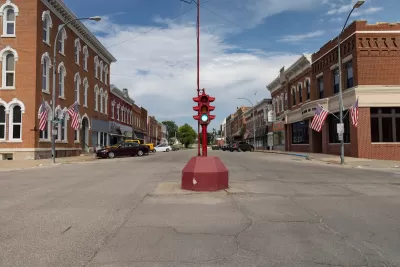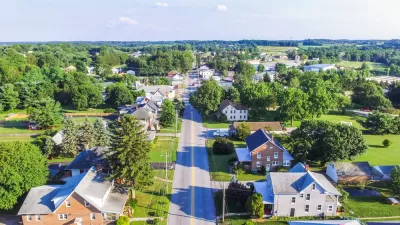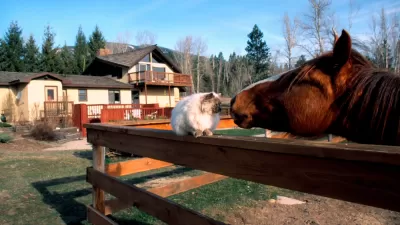Population loss doesn’t have to be a harbinger of doom. Some rural communities are taking small but impactful steps to improve quality of life for their remaining residents.

An article by Tom Barton in The Gazette highlights the efforts rural Iowa communities are making to improve life for residents and businesses despite a shrinking population and economy.
Renovating old buildings like restaurants can be expensive, but can also serve as a catalyst for revitalizing a neighborhood. “State and regional experts say it’s a prime example of how shrinking small towns can manage and stabilize population loss, by focusing on growing community pride and identifying projects that add to residents’ quality of life.” While rural towns may continue to shrink, local leaders can plan for reduced populations while maintaining local services.
This is the aim of the ‘smart shrinkage project’ started at Iowa State University, which “received a three-year, $1.5 million grant from the National Science Foundation to build upon a 2017 pilot study examining whether there were towns in Iowa that have lost population but perception of quality of life has remained stable or improved.” The research team found that social infrastructure was a key factor in how well communities fared.
“Economic development projects often require significant financial investment and may or may not pan out long-term, whereas quality-of-life initiatives — such as trails, community events, fitness options and child care — are typically low-cost and in local control,” according to Kimberly Zarecor, leader of the research project.
The communities studied all embrace a “shrink small” approach, which moves away from stigmatizing population loss and toward strengthening community infrastructure through a focus on philanthropy, community-led projects, and small but impactful projects.
FULL STORY: Rural Iowa continues to lose population. How some small towns are working to ‘shrink smart’

Study: Maui’s Plan to Convert Vacation Rentals to Long-Term Housing Could Cause Nearly $1 Billion Economic Loss
The plan would reduce visitor accommodation by 25,% resulting in 1,900 jobs lost.

North Texas Transit Leaders Tout Benefits of TOD for Growing Region
At a summit focused on transit-oriented development, policymakers discussed how North Texas’ expanded light rail system can serve as a tool for economic growth.

Why Should We Subsidize Public Transportation?
Many public transit agencies face financial stress due to rising costs, declining fare revenue, and declining subsidies. Transit advocates must provide a strong business case for increasing public transit funding.

How to Make US Trains Faster
Changes to boarding platforms and a switch to electric trains could improve U.S. passenger rail service without the added cost of high-speed rail.

Columbia’s Revitalized ‘Loop’ Is a Hub for Local Entrepreneurs
A focus on small businesses is helping a commercial corridor in Columbia, Missouri thrive.

Invasive Insect Threatens Minnesota’s Ash Forests
The Emerald Ash Borer is a rapidly spreading invasive pest threatening Minnesota’s ash trees, and homeowners are encouraged to plant diverse replacement species, avoid moving ash firewood, and monitor for signs of infestation.
Urban Design for Planners 1: Software Tools
This six-course series explores essential urban design concepts using open source software and equips planners with the tools they need to participate fully in the urban design process.
Planning for Universal Design
Learn the tools for implementing Universal Design in planning regulations.
Ascent Environmental
Borough of Carlisle
Institute for Housing and Urban Development Studies (IHS)
City of Grandview
Harvard GSD Executive Education
Toledo-Lucas County Plan Commissions
Salt Lake City
NYU Wagner Graduate School of Public Service





























